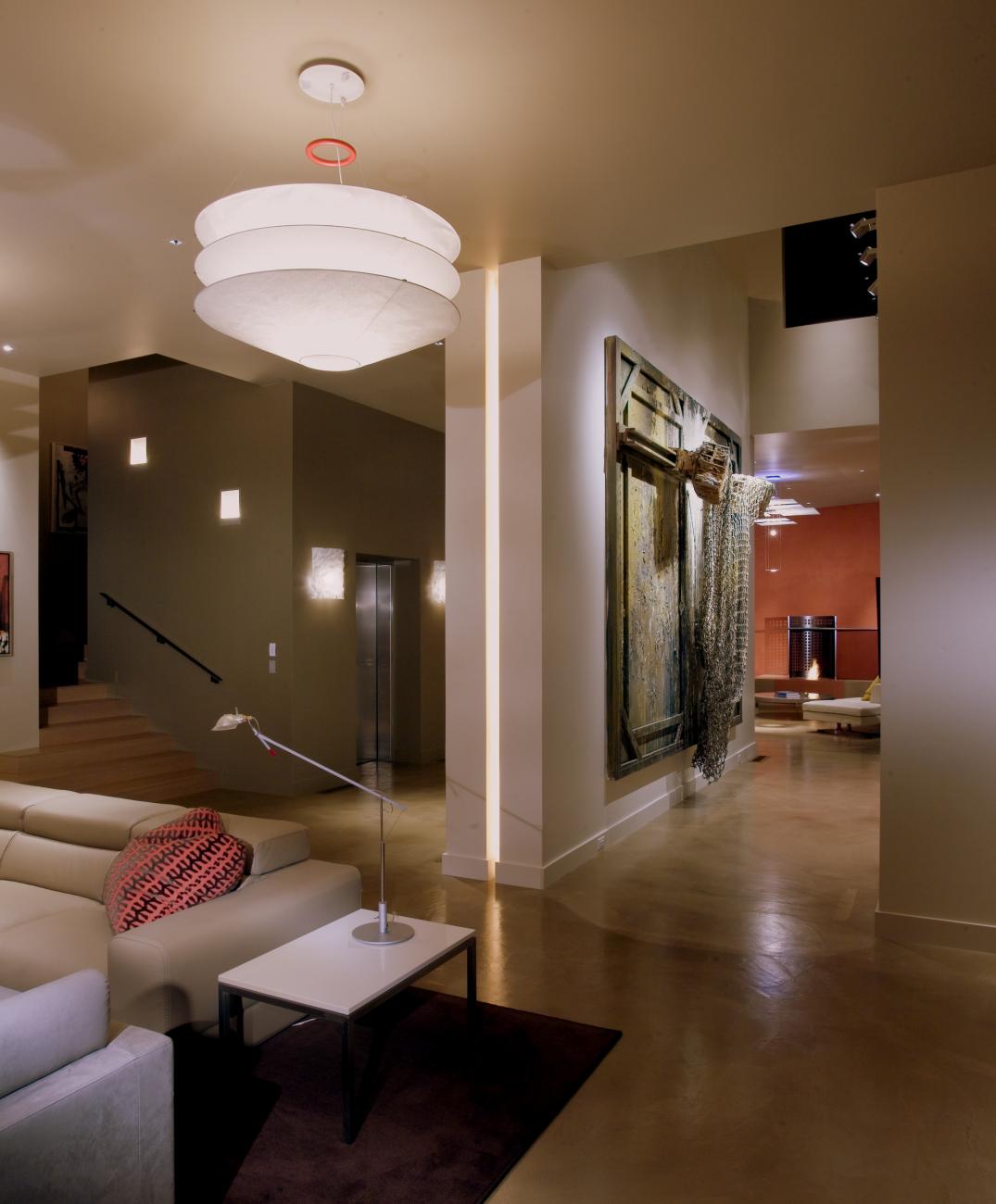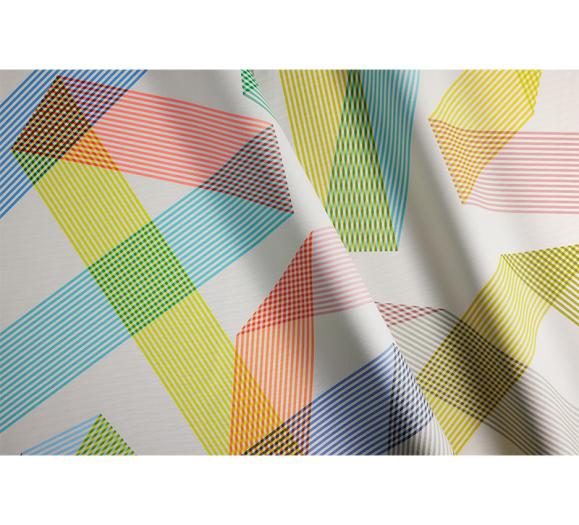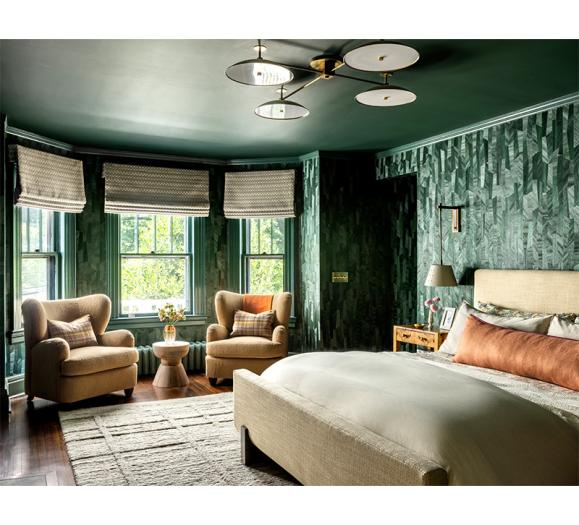From pendants to floor lamps and everything in between, lighting gives us endless opportunities to illuminate spaces with style. More than just the icing on the cake, an intentionally crafted lighting design is essential to the look, feel and functionality of a room. We spoke with a lighting designer and three well-respected makers to gain some insights into great lighting design.
A decorative lighting piece can bring visual interest to a space, even when switched off. The form, color and materials of a fixture combine to create a unique statement. For lighting designer Randall Whitehead, that’s the fun of decorative lighting, which he calls the architectural jewelry that dresses up a space.
Kayli Rowsell, Senior Designer for Arteriors said they often treat their lighting fixtures as sculpture. “These pieces look beautiful as is,” she said, “and there is an added element of beauty when they are switched on and throw light.”
Designer collaborations can add to the artful flavor of a maker’s lines. At Currey & Company, designers from Bunny Williams to Barry Goralnick bring their own style and point of view to each product. Product designers at Currey have also started to utilize a wide range of materials as they seek to catch our eyes in new ways. The company’s PR Maven, Bethanne Matari, said these can range from seashells, rattan, marble, and alabaster to granite, wrought iron, and concrete.
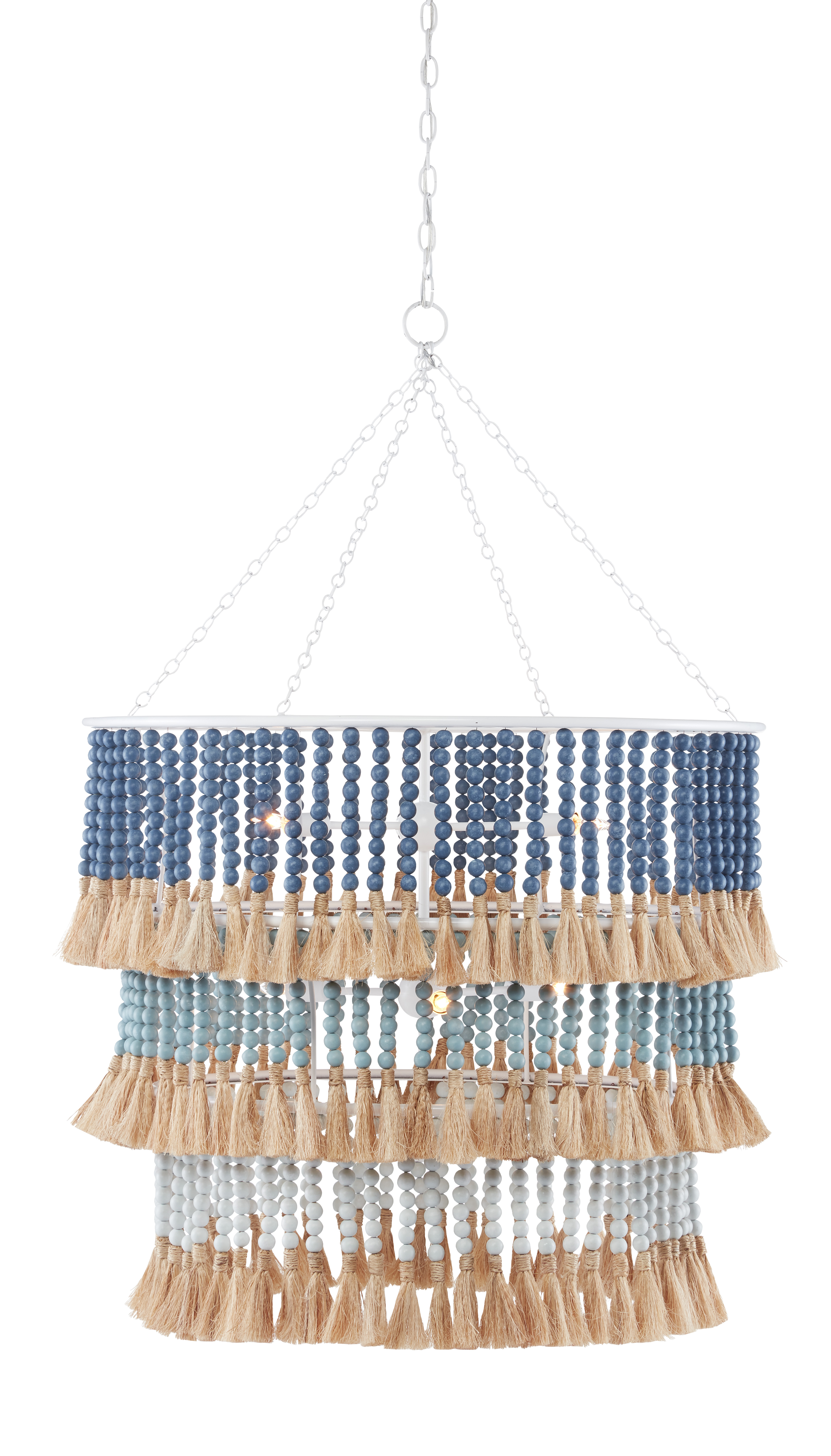
At Hinkley, a new High Point Market exhibitor this fall, Product Manager Lauren Lovett has found success by pushing the envelope a bit more in her designs, too. In recent years, she has opted for more mixed materials, natural elements, and color.
“If you can put in some ceiling lights and sconces on the wall, you don’t have to worry as much about making sure that single fixture is throwing off as much light as it needs to,” Lovett continued. “It can stand on its own.”
Functional impacts
While lighting fixtures are sculptural, they also have functional impacts in the way they sculpt light. Good lighting design optimizes the usefulness of each element by considering its placement and direction.
Beyond the form and color of the pieces you choose, Whitehead told us that you can create artful compositions of light by layering task, ambient, accent, and decorative lighting. Plus, these layers of light can make people feel more comfortable in a room.
Whitehead highlights the way a pendant or grouping of pendants can drastically alter the sense of ceiling height in a space. A room with a small footprint and high ceiling can gain a secondary ceiling line — and a more human scale — with the addition of some well-placed ceiling fixtures. Whitehead is also seeing designers use multiple pendants in a room, rather than just one, to create a more architectural, sculptural look.
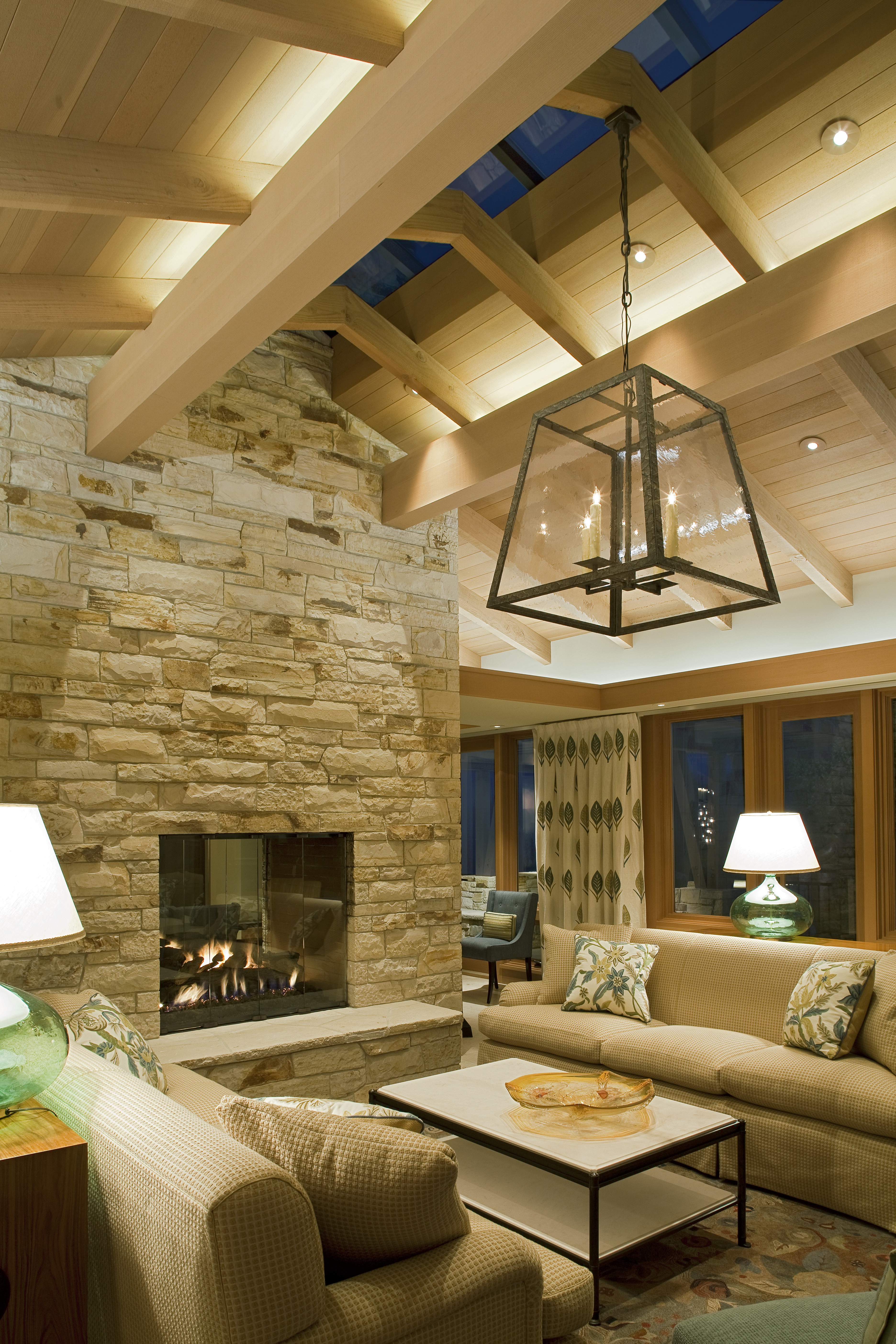
Ambient lighting is key for Whitehead, as it creates the glow that draws people into a room. Lighting directed up at the ceiling can soften the shadows on people’s faces while also highlighting any architectural details of the ceiling. “Downlight placement can spotlight artwork or other design elements, but should be avoided directly over seating areas,” he said.
Whitehead noted that scale is also an important factor that can be tricky to get right. He tends to scale up rather than down, and suggests designers should plan out the space and use templates to make sure the lighting is the right size before ordering. He offers a general formula for scale: add up the dimensions of the room in feet to get the diameter of the ceiling fixture in inches. For example, 12’ x 10’ foot room should have a ceiling fixture with a diameter of 22 inches (12 + 10 = 22).
Even seemingly smaller touches, such as the choice of shade on a lamp, can make a big impact. The opacity of a shade determines whether it disperses or directs light. While translucent shades will attract more attention to a lamp, Whitehead says an opaque shade is the better choice when you want to direct light onto a work surface or bedside table.
For more tips on lighting design from Whitehead, check out his new book, Beautiful Light: An Insider’s Guide to LED Lighting in Homes and Gardens. It will guide you through the successful use of LED lighting in every room.
Ultimately, it’s an exciting time for lighting manufacturers, lighting designers, and interior designers, filled with options to create a layered, artful and functional lighting scheme for any room. Lovett notes that she’s been happy to see a growing interest in decorative fixtures over the last few years. “There’s just such an appetite for lighting right now,” she said.
When you’re looking for illuminating inspirations at Fall Market, the exhibitors we spoke with here will be great places to start:
Hinkley makes its High Point Market debut with an 8,150 square-foot showroom in the Historic Market Square building. Long-term partner and designer Lisa McDennon helped design the new space.
Currey & Company will debut more than 200 new products, including new designs in collections by Bunny Williams, Aviva Stanoff, Jamie Beckwith, Hiroshi Koshitaka, and the Winterthur Museum. Currey will host its Preview Day event on Oct. 15, an Oct. 16 event with designer Jamie Beckwith, and daily demonstrations from artist and custom lampshade maker Susan Schneider.
At Arteriors, 121 new lighting products, spanning the spectrum from direct fixtures to portable lighting, are set to debut. Rowsell is particularly excited about the Jana fixture, which features a buri mid-rib construction that gives it a nest-like silhouette. She also picks the Kinlee chandelier, with its layered textured glass panels that resemble medallions, as a must-see.
And that’s just the start. There are literally hundreds of lighting showrooms in High Point. To find your must-sees, just visit High Point's Exhibitors section and select the “Lamp & Lighting” Category filter.
Please note: High Point Market is open to the trade only.



